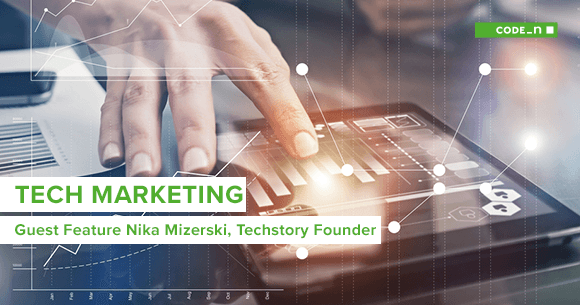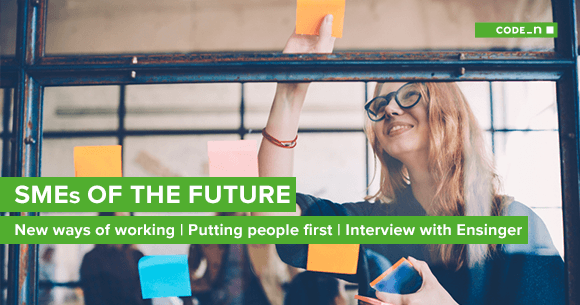GUEST FEATURE GFT Technologies SE | Why the internet of things offers so much potential to SMEs
 Many small or medium-sized companies are still hesitant when it comes to digital transformation. Yet the innovative technologies and networked processes they could be enjoying would not only enhance the efficiency of day-to-day business, they would also lay the foundations for new business models. One central part of this – an area offering tremendous potential – is the internet of things (IoT). This potential needs to be exploited now, before the competition gets there first. And an important aspect of picking the right digital strategy is making sure you bring the right people on board. A partner with the right experience in consulting and technology is worth its weight in gold.
Many small or medium-sized companies are still hesitant when it comes to digital transformation. Yet the innovative technologies and networked processes they could be enjoying would not only enhance the efficiency of day-to-day business, they would also lay the foundations for new business models. One central part of this – an area offering tremendous potential – is the internet of things (IoT). This potential needs to be exploited now, before the competition gets there first. And an important aspect of picking the right digital strategy is making sure you bring the right people on board. A partner with the right experience in consulting and technology is worth its weight in gold.
The German economy is already gearing up for a future revolving around digital technology. The term on everyone’s lips is Industry 4.0, in other words connected manufacturing or smart business. The IoT market is currently expanding at around 20 per cent per year. IoT revenues in Germany are expected to hit €16.8 billion in 2022. The fastest growing area is likely to be the automotive sector, followed by mechanical and plant engineering. Together, these sectors account for 50 per cent of the German market for industrial IoT solutions. Until now, it has mainly been the big companies that have been looking at the internet of things. Leading firms involved in mechanical engineering, plant manufacturing, vehicle production and the retail trade have now declared that their number one priority in the coming years will be to link the real world with the digital world. Of course IoT technology also offers smaller companies a golden opportunity to enter new fields of business, for example in areas like machine learning.
The first steps towards digitalisation are crucial
Despite expectations, SMEs are only partly joining in with these developments. The reasons for this range from a lack of IT expertise to reservations regarding costs, despite the fact that these are amortised in the medium to long term. Digital transformation also requires a certain mindset of welcoming new technology and openness in terms of a culture of change, from C-suite management to people in accounting. The first steps of the change process are typically challenging, but they’re also groundbreaking.
Adding value by linking the IoT and AI
IoT applications require very large volumes of data which have to be processed quickly. This normally calls for big data technology. But there’s even more potential for firms if they combine the IoT, data and artificial intelligence (AI). This is because AI makes it possible to enhance the data created by IoT solutions and use it to come to intelligent conclusions. At the same time, gathering this information can be a driving force in AI development. So there are mutual interdependencies. By using the right combination of technology, firms can employ existing resources more efficiently, introduce preventative measures and optimise a whole slew of processes. Typical examples of where this has happened are tracking systems used by logistics firms, automatic error messages sent by machinery and fully automatic production processes. The GFT approach to industrial solutions spans three reference areas of IoT architecture – on the front edge level (the crossover point between machine automation and IT infrastructure), on the platform level and on the company level.
Help pinpointing the best IoT model
There are now so many platform options and solutions on offer that it has become extremely difficult and complex separating the wheat from the chaff. The challenge is to work out how to combine a whole host of components with different interfaces and communication protocols – from sensors to control units and entire ERP applications. To plump for the right solution, you need a carefully calibrated strategy based on an underlying digital concept. This is where GFT comes in as an experienced consulting and technology partner. Tapping into our global innovation network, we work with the customer to develop future-ready business models with an emphasis on enabling developments in areas such as the internet of things, cloud engineering, artificial intelligence and blockchain technology. Thanks to our in-depth understanding of the technical and procedural parameters of business-critical systems, regulatory requirements, security concepts and open interfaces, we have delivered a large number of successful projects, especially in the financial sector.
And it’s exactly this expertise that can be so beneficial to industrial enterprises, whether they’re at the beginning of a transformation process or things are already in full swing. The first step involves using established methods to work out a company’s ability to innovate – i.e. whether a firm is ready for embarking on digital transformation and how it would make things happen. Then we work up a digital strategy together and walk step by step through the implementation process. We see this as a partnership of equals – we are in tune with the customer while also ensuring there is no unnecessary drain on any internal resources required for daily business.
GFT clients gain access to highly qualified software developers, providing essential know-how for their digitalisation projects. Thanks to almost 3000 experts at our European Software Engineering Centre (ESEC) plus another 1000 experts at the American Software Engineering Center (ASEC), we’re in an ideal position to tap into the very latest development methods and technologies – and thus able to implement successful projects of any size.
Highlighting potential production enhancements with our simulator
We also have a special tool which has been adapted to the needs of manufacturing and provides end-to-end graphical representations of production processes. The beauty of this tool is that it allows us to provide manufacturing firms with a more ‘playful’ introduction to the IoT. Customers can simply try things out themselves and test different scenarios. As well as giving clients a better feel for their data, the tool also allows them to develop a business blueprint without having to take the financial plunge. Our simulator provides valuable decision-making support while improving processes – for example if you’re considering how to integrate wireless sensors into your systems or if you’re examining the likelihood of machine downtime.
NOTE: This article was originally published by GFT.






Write a comment